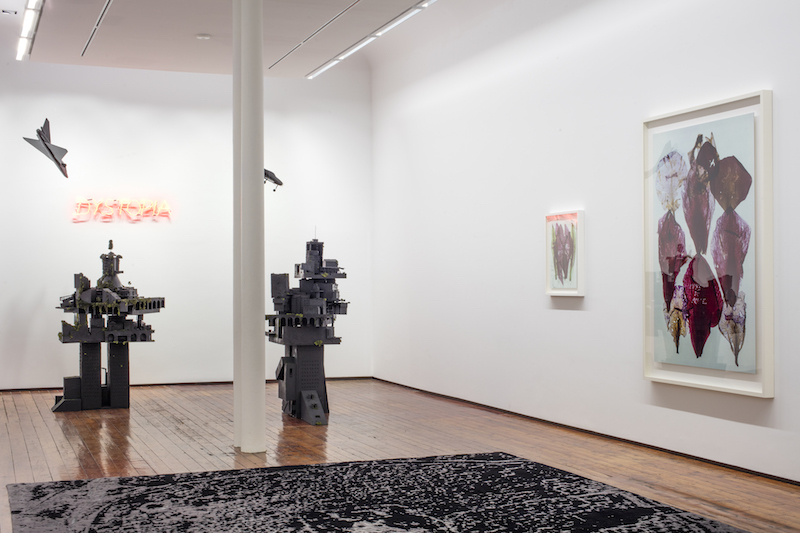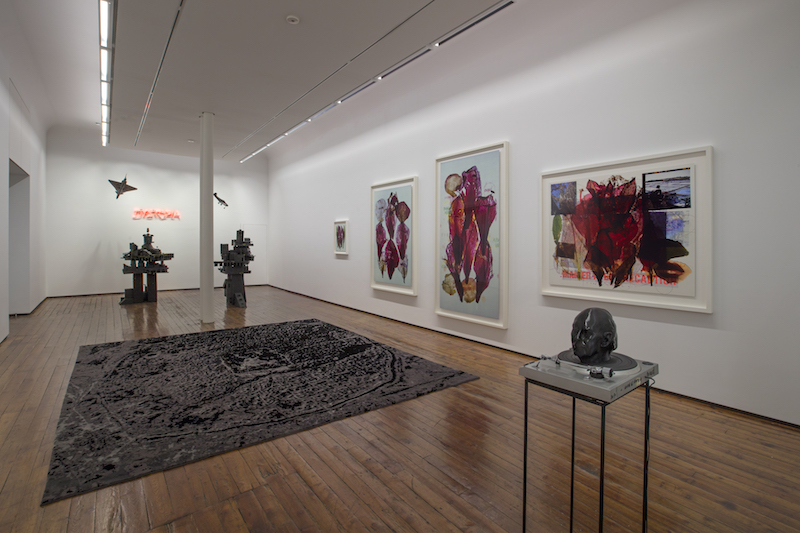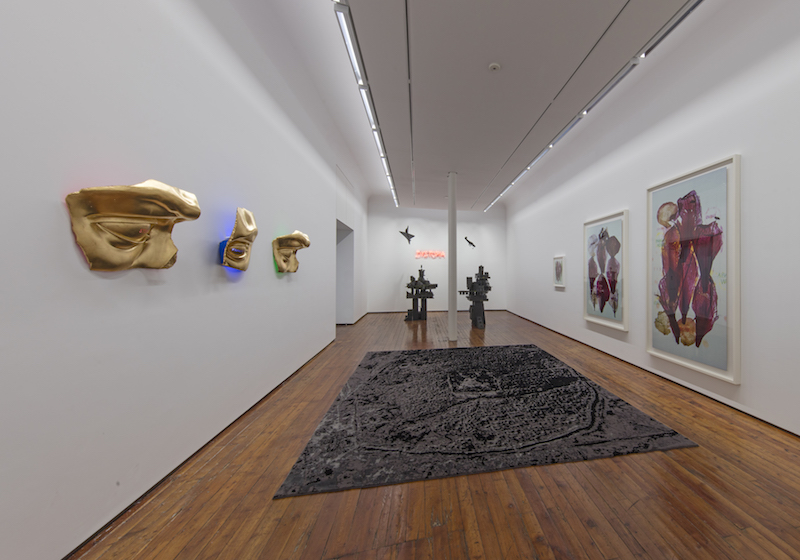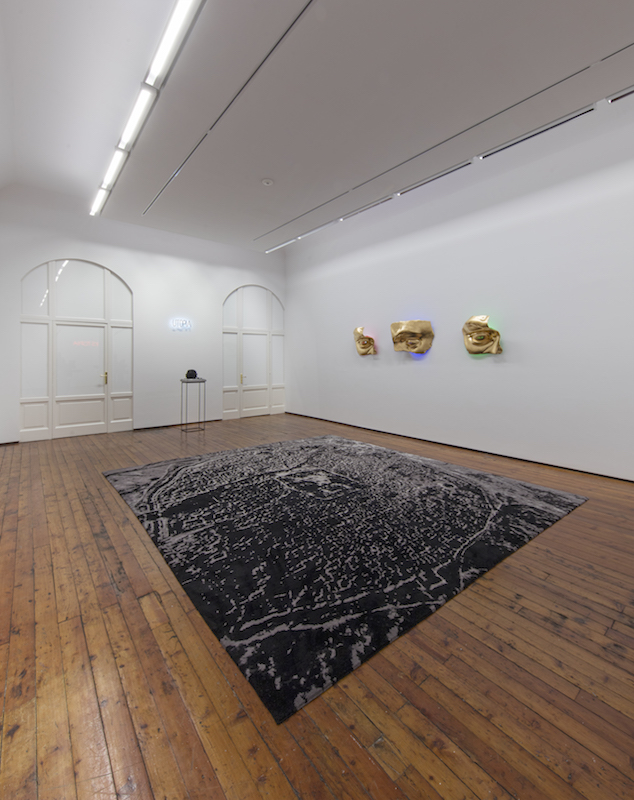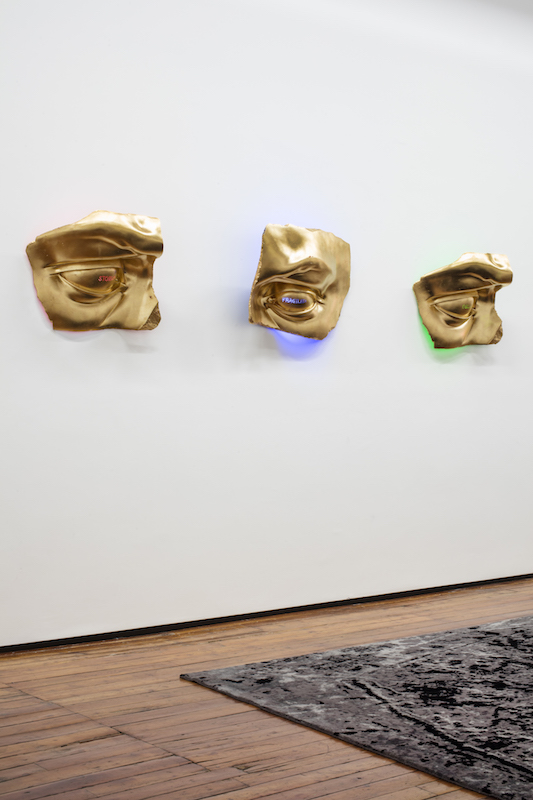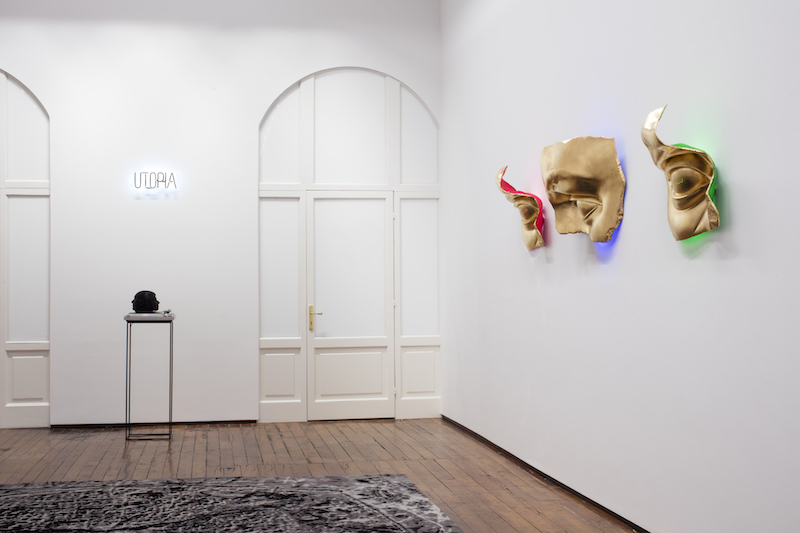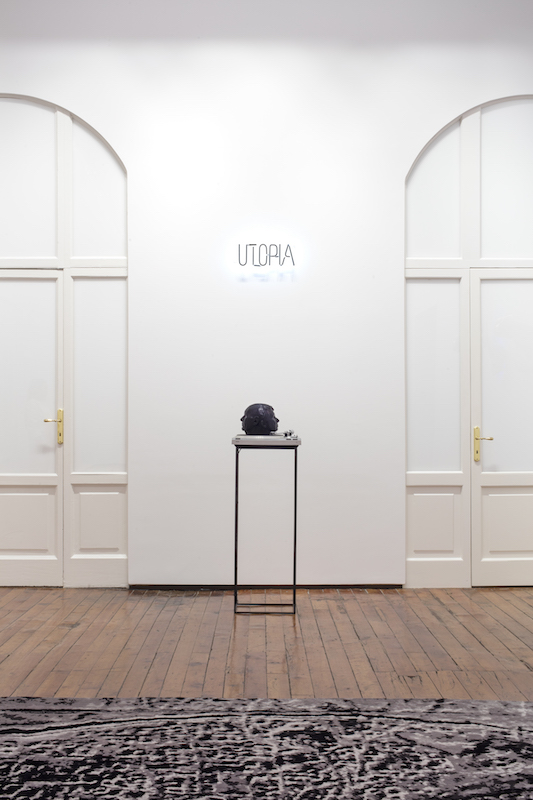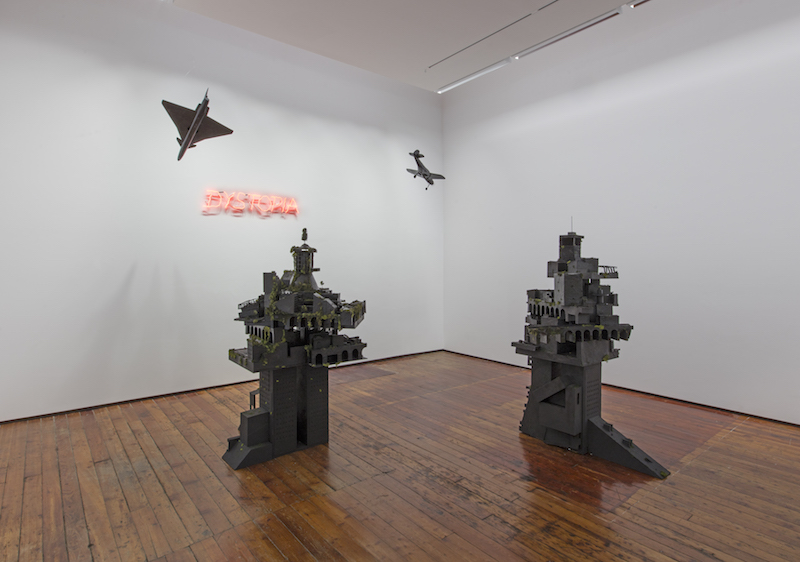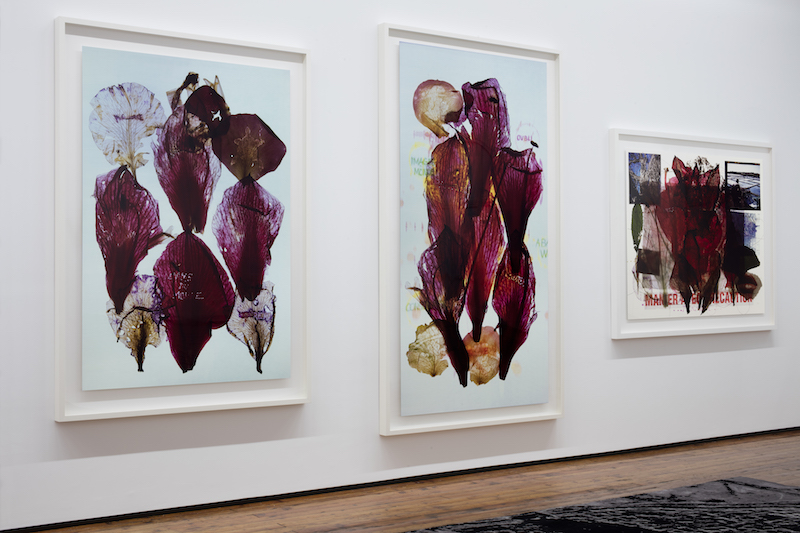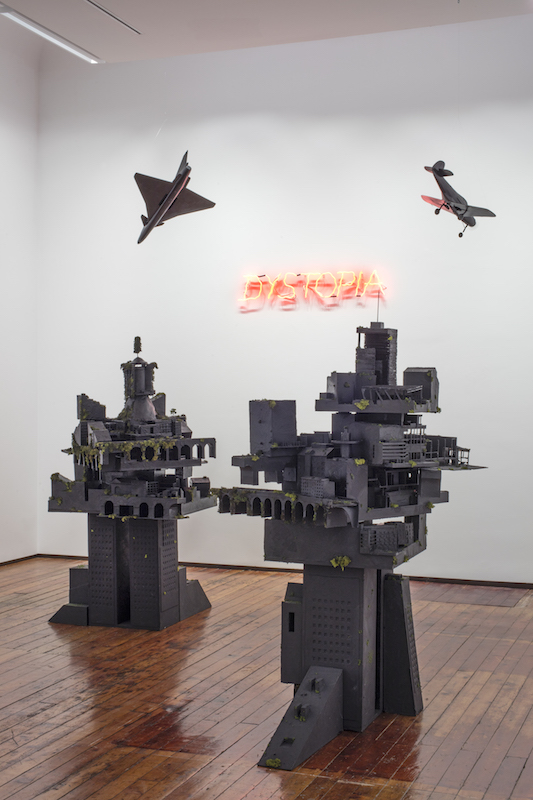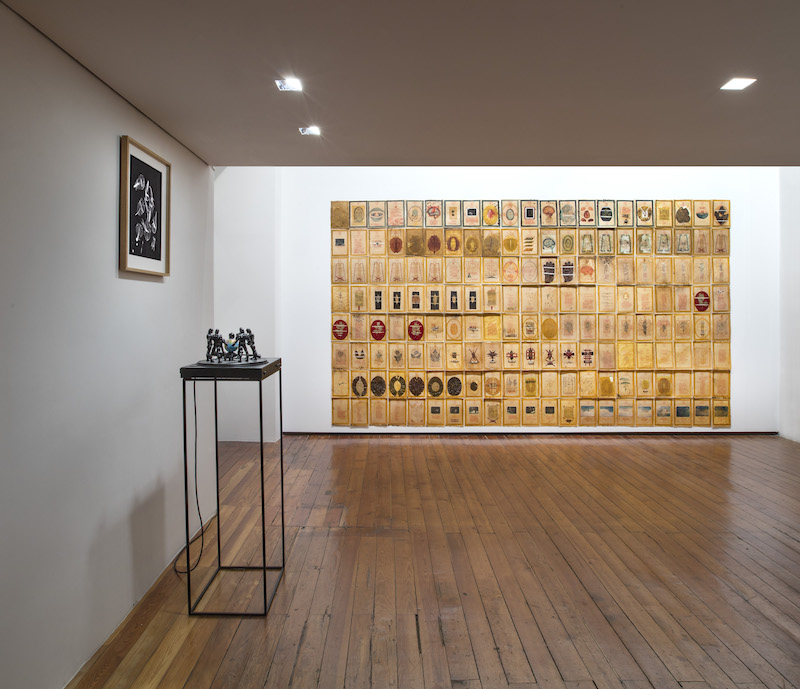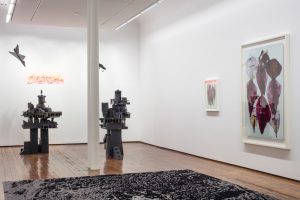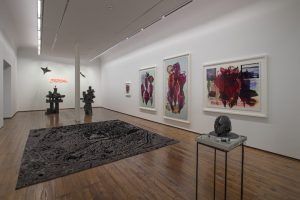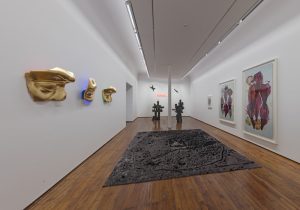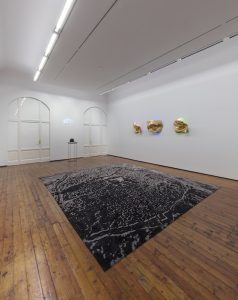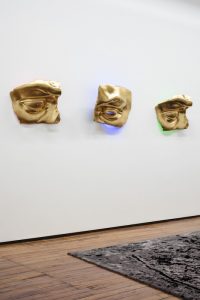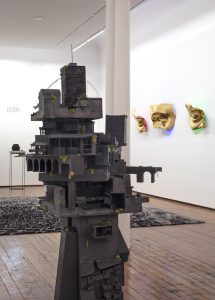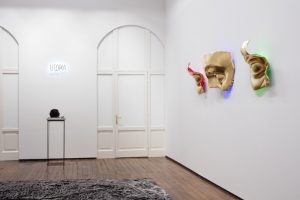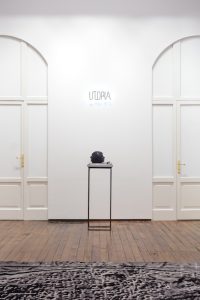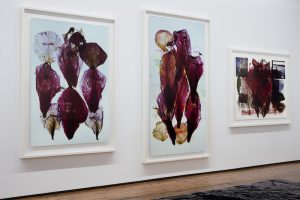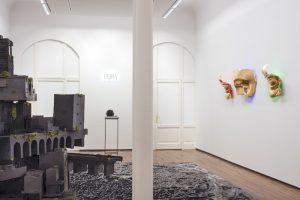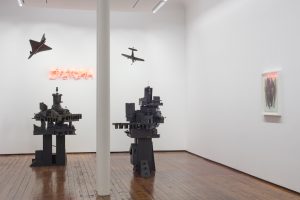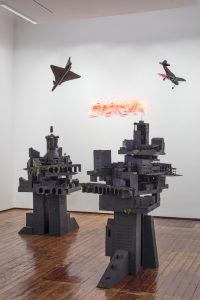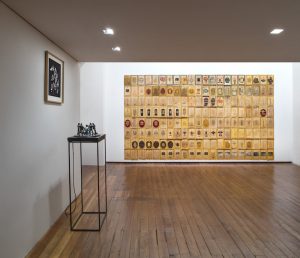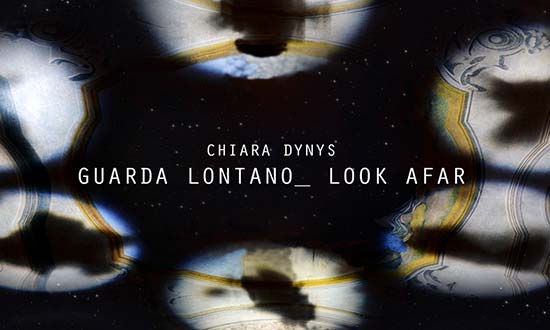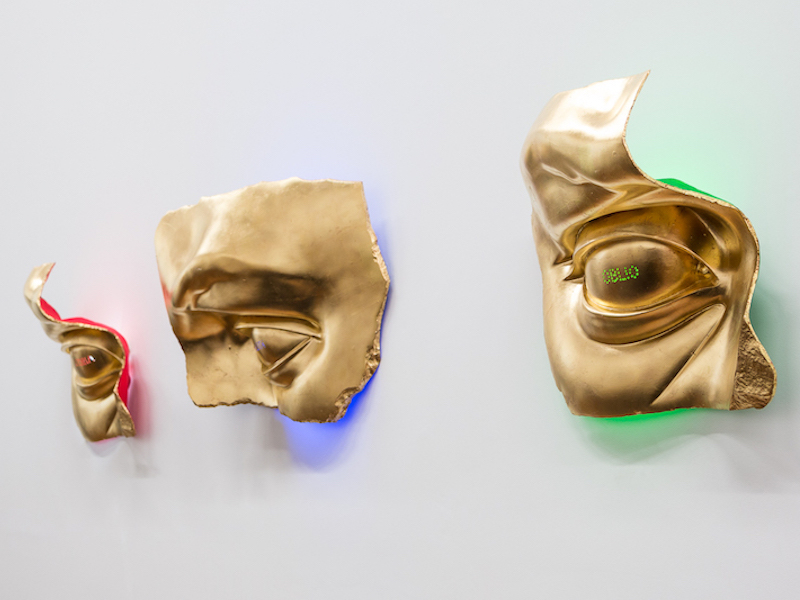
ANNE & PATRICK POIRIER
DYSTOPIA
22 September to 20 December 2017
ANNE & PATRICK POIRIER
DYSTOPIA
22 September to 20 December 2017

Text
Galleria Fumagalli presents DYSTOPIA, the first solo show of French artists Anne and Patrick Poirier in its exhibition space. Since 1967, Anne and Patrick Poirier have been working together as travellers, surveyors of sites and discoverers of ancient civilizations, religions and cultures. Embracing the human sciences with an artistic approach and in the wake of Claude Lévi-Strauss’s teachings, during their explorations they gather archive material useful for the understanding of the organization and the disappearance of ancient societies. Their artistic practice follows some inspirational perspectives, architecture, archaeology, mythology, psychology, anatomy, anthropology, all metaphors and tools to investigate a physically perceptible reality and its relationships with the unconscious. Heterogeneous in the formal result, Anne and Patrick Poirier’s entire body of works includes plastics, sculptures and environmental installations, photographs, works on paper, paintings and other visual fragments concerning the fragility of life. For the exhibition DYSTOPIA Anne and Patrick Poirier worked on the production of new works, in continuity with the research done in recent years on the sites of ancient Mesopotamia (today Iraq and Syria) and as a sum of a shared and always moving working methodology. The title of the exhibition refers explicitly to the term dystopia, coined at the end of the eighteenth century as negative antithetical of utopia: an artificial society in which some social, political and technological trends experienced in the present are brought to the extreme by highlighting their negative and distorting aspects. Similarly, using the past and the present as subjects matter for the creation of an aesthetic representation of future suggestions, the work of the Poirier creates invented models, incarnations of imaginable but artificial forms of civilization.
The title of the exhibition refers to the two black towers, Dystopia I and Dystopia II (2017), welcoming the visitor in another dimension, suspended between the historical-temporal and geographical coordinates. Cities of the future resulting from an aborted human project, the two towers are the opposite of the image of an ideal civilization, a dystopian projection of our time. The sculpture Janus (2017), depicting the communicating heads of the artists made of black resin, is evidence of the symbiosis of Anne and Patrick Poirier, of the abandonment of their respective egos and of the total communion of ideas and sensibilities, in work as in life. At the centre of the exhibition, the carpet Hatra (2015/2016) represents an old ruined city in the Iraqi region of Jazira, photographed before the recent conflicts that partially destroyed it. The image of the city captured by Google Earth satellites and now translated with traditional weaving techniques of wool, silk and bamboo fibres, generates a technical anachronism that accentuates the sense of contemporary alienation. While on the one hand the sculptural medium is privileged in the representation of the ruins, or of what remains of real and imaginary destroyed civilizations, photography is witness of the ephemeral and deliberately emphasises the fragility and vanity of things. The Archives (2013) series, large format cibachromes, portrays still life composed patiently by the artists by accumulating various objects such as broken glasses, skins, ripped photos, decaying plants, flowers that will inevitably wither away. The paper medium – historically devoted to writing then to the durable transmission of information – is used in Ouranopolis (1995), a representation of a practice of impression of places typical of the work of the Poirier. It is a kind of microscope diary in which writing and image document the passing of days. Also on show the neon lights Utopia (2017) and Dystopia (2017), and three fragments of eyes that evoke topics characteristic of the artists’ work: Storia (History), Oblio (Oblivion), and Fragilità (Fragility) (2007/2017).
In response to a society obsessed with the present and its uninterrupted media and virtual participation, Anne and Patrick Poirier invite us in a suspended environment, with no time and spatial references defined. They make us waver between the memory of ancient civilizations and the invention of a future world, stimulating our imagination and the project of a new utopia or dystopia… Anne & Patrick Poirier studied at the École des Arts Décoratifs in Paris and have been residents at Villa Medici in Rome from 1969 to 1971. Numerous the international exhibitions in which they took part: the Venice Biennale (1976, 1980 and 1984) documenta VI of Kassel (1977) and the Biennale de Lyon (2000). Their work has been exposed in some of the most prestigious institutions such as the Neuer Berliner Kunstverein in Berlin (1977), the Centre Georges Pompidou in Paris (1978), the MoMA in New York (1979) and The Getty Research Institute in Los Angeles (2001). More recently, their work was exhibited at the Couvent de la Tourette (2013), at the Musée des Beaux-Arts de Nantes (2014), at the Musée d’Art Moderne et contemporain de Saint-Etienne (2016) and at the Skulpturenpark Waldfrieden (Tony Cragg Foundation) (2016). In September 2017, in addition to the exhibition DYSTOPIA at Galleria Fumagalli in Milan, they inaugurate their personal shows at Galerie Mitterand in Paris (September 8 – October 31, 2017) and at the Maison Européenne de la Photographie in Paris (6 September – 29 October, 2017).
Text
Galleria Fumagalli presents DYSTOPIA, the first solo show of French artists Anne and Patrick Poirier in its exhibition space. Since 1967, Anne and Patrick Poirier have been working together as travellers, surveyors of sites and discoverers of ancient civilizations, religions and cultures. Embracing the human sciences with an artistic approach and in the wake of Claude Lévi-Strauss’s teachings, during their explorations they gather archive material useful for the understanding of the organization and the disappearance of ancient societies. Their artistic practice follows some inspirational perspectives, architecture, archaeology, mythology, psychology, anatomy, anthropology, all metaphors and tools to investigate a physically perceptible reality and its relationships with the unconscious. Heterogeneous in the formal result, Anne and Patrick Poirier’s entire body of works includes plastics, sculptures and environmental installations, photographs, works on paper, paintings and other visual fragments concerning the fragility of life. For the exhibition DYSTOPIA Anne and Patrick Poirier worked on the production of new works, in continuity with the research done in recent years on the sites of ancient Mesopotamia (today Iraq and Syria) and as a sum of a shared and always moving working methodology. The title of the exhibition refers explicitly to the term dystopia, coined at the end of the eighteenth century as negative antithetical of utopia: an artificial society in which some social, political and technological trends experienced in the present are brought to the extreme by highlighting their negative and distorting aspects. Similarly, using the past and the present as subjects matter for the creation of an aesthetic representation of future suggestions, the work of the Poirier creates invented models, incarnations of imaginable but artificial forms of civilization.
The title of the exhibition refers to the two black towers, Dystopia I and Dystopia II (2017), welcoming the visitor in another dimension, suspended between the historical-temporal and geographical coordinates. Cities of the future resulting from an aborted human project, the two towers are the opposite of the image of an ideal civilization, a dystopian projection of our time. The sculpture Janus (2017), depicting the communicating heads of the artists made of black resin, is evidence of the symbiosis of Anne and Patrick Poirier, of the abandonment of their respective egos and of the total communion of ideas and sensibilities, in work as in life. At the centre of the exhibition, the carpet Hatra (2015/2016) represents an old ruined city in the Iraqi region of Jazira, photographed before the recent conflicts that partially destroyed it. The image of the city captured by Google Earth satellites and now translated with traditional weaving techniques of wool, silk and bamboo fibres, generates a technical anachronism that accentuates the sense of contemporary alienation. While on the one hand the sculptural medium is privileged in the representation of the ruins, or of what remains of real and imaginary destroyed civilizations, photography is witness of the ephemeral and deliberately emphasises the fragility and vanity of things. The Archives (2013) series, large format cibachromes, portrays still life composed patiently by the artists by accumulating various objects such as broken glasses, skins, ripped photos, decaying plants, flowers that will inevitably wither away. The paper medium – historically devoted to writing then to the durable transmission of information – is used in Ouranopolis (1995), a representation of a practice of impression of places typical of the work of the Poirier. It is a kind of microscope diary in which writing and image document the passing of days. Also on show the neon lights Utopia (2017) and Dystopia (2017), and three fragments of eyes that evoke topics characteristic of the artists’ work: Storia (History), Oblio (Oblivion), and Fragilità (Fragility) (2007/2017).
In response to a society obsessed with the present and its uninterrupted media and virtual participation, Anne and Patrick Poirier invite us in a suspended environment, with no time and spatial references defined. They make us waver between the memory of ancient civilizations and the invention of a future world, stimulating our imagination and the project of a new utopia or dystopia… Anne & Patrick Poirier studied at the École des Arts Décoratifs in Paris and have been residents at Villa Medici in Rome from 1969 to 1971. Numerous the international exhibitions in which they took part: the Venice Biennale (1976, 1980 and 1984) documenta VI of Kassel (1977) and the Biennale de Lyon (2000). Their work has been exposed in some of the most prestigious institutions such as the Neuer Berliner Kunstverein in Berlin (1977), the Centre Georges Pompidou in Paris (1978), the MoMA in New York (1979) and The Getty Research Institute in Los Angeles (2001). More recently, their work was exhibited at the Couvent de la Tourette (2013), at the Musée des Beaux-Arts de Nantes (2014), at the Musée d’Art Moderne et contemporain de Saint-Etienne (2016) and at the Skulpturenpark Waldfrieden (Tony Cragg Foundation) (2016). In September 2017, in addition to the exhibition DYSTOPIA at Galleria Fumagalli in Milan, they inaugurate their personal shows at Galerie Mitterand in Paris (September 8 – October 31, 2017) and at the Maison Européenne de la Photographie in Paris (6 September – 29 October, 2017).
Installation views
Installation views
Press
askanews.it
22 September 2017
“Utopia e distopia, i giochi artistici di Anne e Patrick Poirier”
Press
askanews.it
22 September 2017
“Utopia e distopia, i giochi artistici di Anne e Patrick Poirier”

